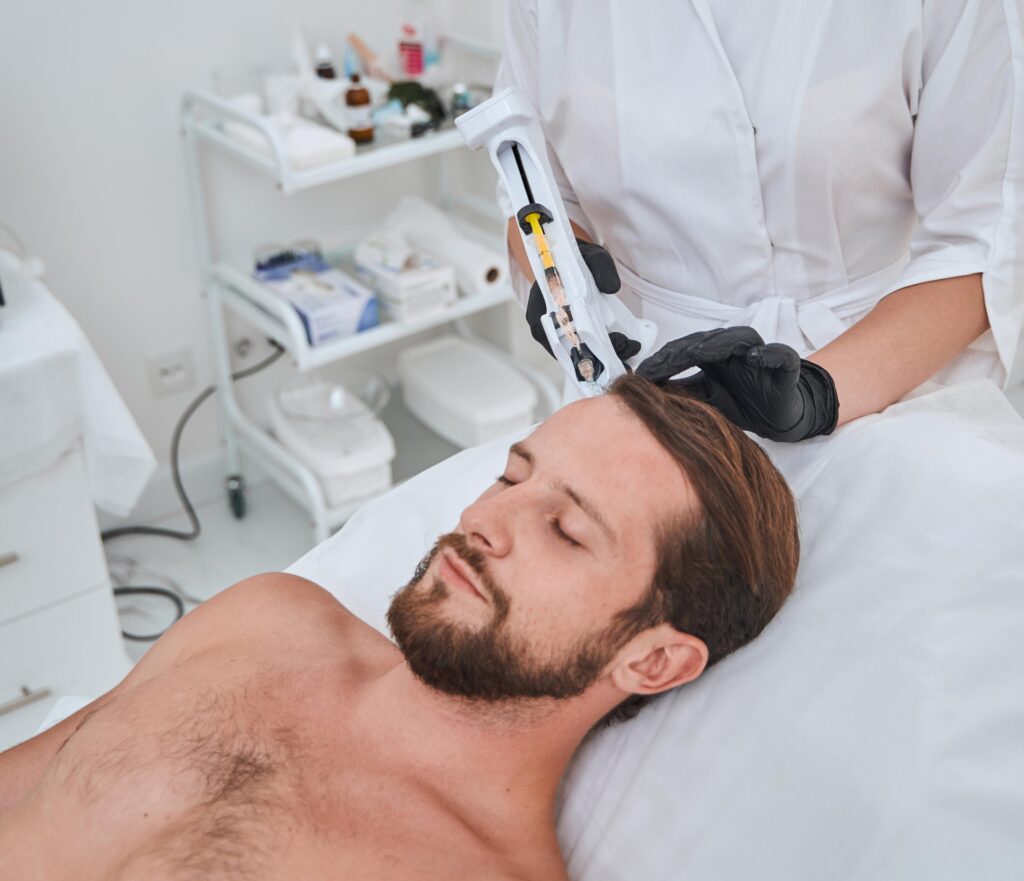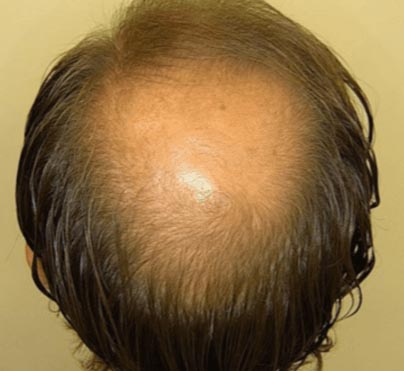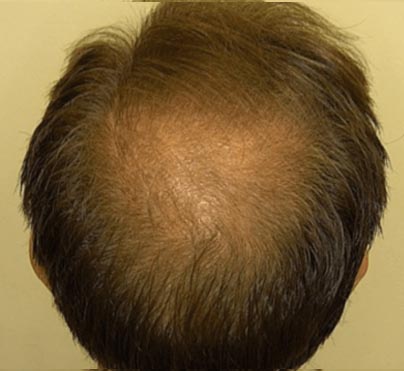Application of Hair Loss Mesotherapy with Dutasteride Pre
Application result in a 49-year-old man. Press the arrows at the bottom to see the results

Androgenetic alopecia is a common challenge for many people, and the search for effective treatments is of intense concern to the medical world. In the battle against androgenic alopecia, dutasteride is emerging as one of the most effective drugs. By focusing its action on reducing the levels of dihydrotestosterone (DHT), a hormone directly linked to hair thinning, dutasteride offers a promising solution for treating hair loss in both men and women. Mesotherapy, a method that combines the local application of therapeutic substances, offers an innovative solution to the treatment of hair loss. With the addition of dutasteride, this method gains even more power.
Dutasteride, with its ability to reduce DHT levels and inhibit hair thinning, is an ideal treatment option for hair loss. The local application of dutasteride through mesotherapy allows direct action on the scalp, offering a focused and effective treatment. It works by inhibiting the type 1 and 2 isozymes of 5α-reductase, thus reducing the production of DHT.
While minoxidil is a popular choice for treating hair loss, dutasteride offers a different mechanism of action with a greater effect on reducing DHT. The combined use of dutasteride in mesotherapy applications provides a more complete solution compared to the simple application of minoxidil. Their main difference is that minoxidil is a widely used regenerative agent that works mainly by affecting blood circulation in the scalp, while on the contrary, dutasteride directly targets the hormonal cause of hair loss, providing a more focused solution. It is very important to emphasize that even compared to finasteride, dutasteride has proven to be even more effective in treating hair loss.
You can see the course of each treatment in the slider below. By pressing the arrows at the bottom you can see the result per session

Application result in a 49-year-old man. Press the arrows at the bottom to see the results

Application result in a 49-year-old man. Press the arrows at the bottom to see the results.
Studies have shown that dutasteride is more effective than other drugs such as finasteride. The integration of dutasteride in mesotherapy is expected to offer even better results in the treatment of hair loss. A study involving 3500 women who were given finasteride and dutasteride separately for hair loss found that taking 0.15mg of dutasteride daily led to an improvement in hair loss in 65.6% of cases, as well as an increase in hair thickness by 83.3%. Women under 50 responded better to treatment with dutasteride compared to finasteride
Conclusions Dutasteride mesotherapy breaks new ground in the treatment of androgenetic alopecia, offering an alternative with an emphasis on local treatment and efficacy. Backed by scientific data and clinical experience, mesotherapy of this type is expected to become a top choice for patients seeking hair loss solutions.
In other words, the movement of the muscles of expression continues but with less intensity, so the wrinkles appear less intense, achieving a very "natural" aesthetic result, as the face appears to be fresh and "rested".
Also, in young people who have a problem with wrinkles only in one area of the face, for example in the middle of the forehead due to intense frowning, we apply only to this area using very few units of the medicine. This is how we solve this problem before we let it create intense deep wrinkles in the middle of the forehead. The ages that turn to us to solve this local frown problem are very young, under 30 years old. In these people, we can also apply a few units of the medicine to the forehead as a preventive measure in order not to let the frontal muscles create the horizontal wrinkles of "denial" and in this way we prevent and prevent the appearance of wrinkles!
We also recommend baby botox to people who have no previous experience with botox application (first timers) and have various phobias and questions about the treatment in order to familiarize themselves with the treatment more easily. Then they might want to try a full face application as well.